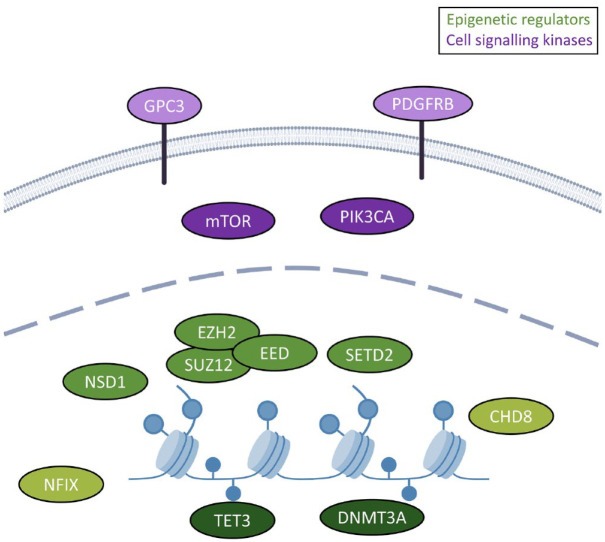Figure 1.
Genes underlying overgrowth are enriched for roles in epigenetic regulation and cell signaling. The genes representing select conditions encode either epigenetic or transcriptional regulators (9/13; green) or cell signaling/kinases (4/13; purple). The epigenetic regulators can be further divided into DNA methylation regulators (dark green; TET3 and DNMT3A), histone modifiers (medium green; NSD1, EZH2, EED, SUZ12, SETD2) and chromatin remodelers (CHD8) and transcription factors (NFIX; light green). The cell signaling proteins can be divided into cell surface receptors (GPC3 and PDGFRB; light purple) and mTOR pathway genes (mTOR and PIK3CA; medium purple). Note that EZH2, EED, and SUZ12 physically interact, which is reflected in the high degree of clinical overlap of their respective conditions.

